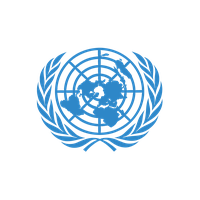
International Day of Non-Violence
Taking place on 2nd October every year.
Sharing the message of non-violence through education and public awareness.
About the event
The International Day of Non-Violence is marked on 2 October, the birthday of Mahatma Gandhi, a pioneer of non-violence as a philosophy and a strategy. It is seen as an opportunity to ‘disseminate the message of non-violence, including through education and public awareness’. As per the UN, non-violence is about Gandhi’s belief that ‘just means lead to just ends’ meaning a peaceful society can only be achieved through peaceful means.
How to approach it
Non-violence is specifically associated with ‘nonviolent action’ which, as practised by Gandhi, is a method of achieving progressive social change. Helping students to understand the reasons and justifications for nonviolent action is instructive for thinking about historical social justice movements, contemporary movements, how power is exercised and the moral debate around the use of force.
To begin, it’s useful to use historical examples of nonviolent practitioners and the social movements they were part of. Two clear examples are Mahatma Gandhi and Martin Luther King Jr. Both led non-violent protests such as Gandhi's salt march and King’s Birmingham Bus Boycott against colonial Britain and segregation era America. It’s useful to explore the social contexts of the time here by asking: What is being protested? What rights are being called for? Why has nonviolence been chosen as a tactic here? In both cases, nonviolence is used because, by acting with dignity, protestors help to reveal the violence of the systems they protest- thus, winning a moral victory, gaining publicity and increasing public support.
Next focus your students' thinking on the modern day by looking at contemporary forms of nonviolent action. For example, Extinction Rebellion, the Fridays for Future climate strikes, or the toppling of racist statues in Black Lives Matter protests. Again, help students think through the reasons for protesting and choosing nonviolence as a tactic. You could ask, for example, why protestors feel this is a good way to get themselves heard or a good way to change things. Martin Luther King Jr’s Letter from the Birmingham jail is a good source of justification for this kind of action. He says: ‘Nonviolent direct action seeks to create such a crisis and foster such a tension that a community which has constantly refused to negotiate is forced to confront the issue.’
Organised by
United Nations

Conversation starter
Mahatma Gandhi used non-violent activism to help end British colonialism in India. Non-violence is common in social justice activism as it is a way to model the peace and equality that social justice aims for. Why might it be difficult to create lasting change by using violent activism? Can you find any current activist movements that use non-violent protest techniques?



